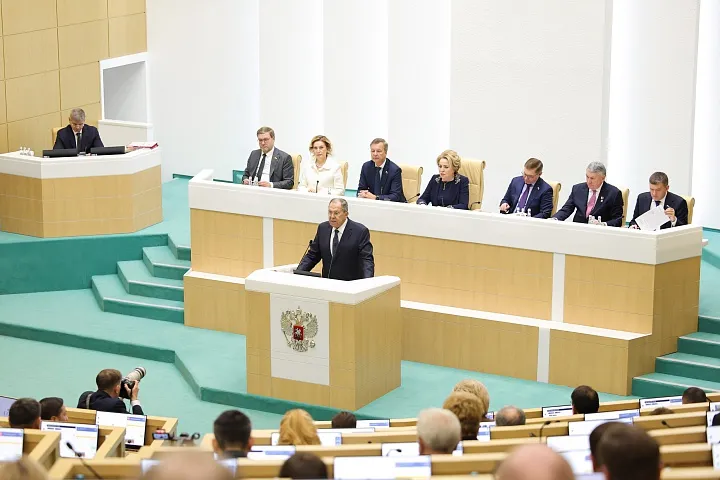In a long editorial board analysis under this headline, RT on July 10 assessed the Russian and Indian leaders’ plans “to expedite projects that could reshape the Eurasian political landscape.” Crucial to them is the plan, emphasized in their Joint Statement, to establish a national currency settlement system between them, enabling all banks and firms (not just the central banks) to book loans, investments, debts, sales and purchases in the rupee and ruble. This was one of nine agreements President Putin and Prime Minister Modi signed, “on promoting cross-border investments, on trade and investments in the Russian Far East through 2029, and cooperation on climate change and low-carbon development.”
Indian Foreign Secretary Vinay Mohan Kwatra, who answered questions in his July 10 briefing about the Indian-Russian agreement to reach $100 billion trade by 2030, spoke about Indian investment, for example, in the Sakhalin-1 oil project, saying: “So, the two leaders, when they spoke of cooperation in this sector, they did focus on how exactly to strengthen that partnership. In the similar way, how exactly India, including in particular through the government-to-government route, could also build partnership with Rosneft and other energy entities.”
Bearing in mind that it is Gazprom, Rosneft, and other Russian energy majors which provide the substantial credits for Russia’s building nuclear power projects in other countries, this links Indian investments to the nuclear power plants being built at Kudankulam and the new NPPs discussed at this summit, with the VVER-1200 advanced reactors now being “supplied to nuclear power plants in China, Bangladesh, Belarus and other countries.” India will invest in and help build a Russian NPP in Bangladesh.
Modi and Putin, according to RT, were given a tour at the Atom Pavilion at VDNKh in Moscow, with many nuclear technologies for both applications other than energy and for energy “including nuclear-power ice-breakers and floating nuclear power plants. Such plants, according to Putin, could eventually ‘replace the oil produced around the world.’”




